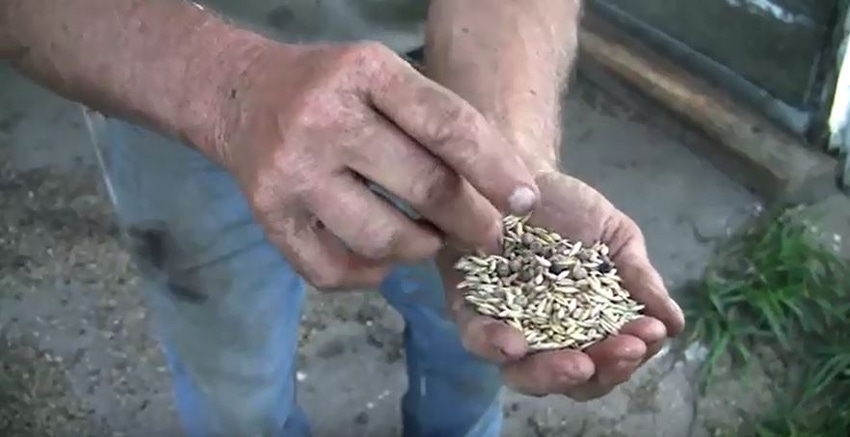April 4, 2017

Time was when oats were included in the diet of nearly every single farm animal (aside from maybe dogs and cats) raised in the state of Iowa. Cattle, dairy cows, horses, chickens, pigs and sheep all ate oats (and other small grains) at various stages of their lives. That time has now past, of course, on most farms. But for many farmers, small grains still make up an important component of the livestock feed ration.
In this week’s episode for Rotationally Raised, we hear from several farmers around the state about how they include small grains in livestock feed.
Feeding small grains
Oats are probably still the most common small grain to be fed to livestock on Iowa farms. Practical Farmers of Iowa members Vic Madsen of Audubon and Ron Rosmann of Harlan both include oats in their hog and cattle rations. For more information on feeding small grains to hogs, check out this Iowa State University Extension publication: Feeding Small Grains to Swine, PM 1994. The publication is available for downloading from the ISU Extension store https://store.extension.iastate.edu/.
And while many farmers do include oats in their feed ration, over the past few years they have also been growing “succotash.” Succotash is a mix of several small grains, and sometimes field peas are included in the mix to increase protein content. Often this mix is spring wheat, spring barley, oats and field peas.
Ron Rosmann of Harlan says that theoretically, if you had the right small grains and enough peas, you wouldn’t have to use any soybean meal. “But what we do is a compromise,” he says.
Planting a succotash mix
The Rossmanns plant a mix that includes about 90 lbs. of an oat-wheat-barley mix and about 35 lbs. of field peas an acre. They harvest that crop and grind it all together, and mix it into their hog ration. “When we send our rations in to be tested, we’ve got it figured out that generally we have enough field peas in there that we can reduce our soybean meal by 50% in a grow-finish ration,” he says.
Regardless of the ration, sending a sample in to a lab to be tested is important, both for determining the nutrient content of the grain and to make sure there aren’t any toxins that could cause health problems for livestock. One such lab that many Midwest farmers use is Dairyland Laboratories in Wisconsin.
“We started growing succotash because we wanted a higher quality feed, instead of just straight oats, a higher protein feed, something that would work better in our hog ration,” says Dan Wilson of Paullina in northwest Iowa. “We like it because of the multispecies aspect of it,” says Dan’s son Torray, who leads the cattle operations on their farm. Torray adds, “With different types of roots growing in the soil, and different growth habits, it seems like some years favor one type of small grains crop or mixture over the other a little bit.”
Use grinder-mixer, on-farm
One piece of equipment farmers who are growing their own feed probably can’t live without is a grinder-mixer. Rosmann says the grinder-mixer has been the way all farmers have ground and mixed their own rations since the 1960s, when this piece of equipment first hit the market, but they are now becoming less common.
“They’re still out there on some farms today,” he says, “but they might not be in the best shape. You know, you might spend $500 on a used grinder-mixer to buy it, but then you might spend $1,500 getting it ready. However, that’s still better than buying a new grinder-mixer, which might cost $20,000. You should at least look for something used, to get that cost down no matter what it is you’re doing,” says Rosmann.
Formulating feed rations
For more information on formulating alternative feed rations, see the video of Jeff Mattock’s presentation at the 2017 Practical Farmers of Iowa Annual Conference. Jeff is a feed ingredient specialist at Fertrell Company, which focuses on natural and organic fertilizers, minerals and premixes. In his presentation, Mattock gave detailed explanations of each of the small grains (as well as other alternative feed sources) and how they could replace corn and/or soybeans in livestock diets.
Next week, in the next episode of Rotationally Raise, we’ll dig deeper into the connection between livestock and small grains. We’ll learn how farmers are planting diverse grazing mixes following small grains harvest to extend their grazing season and how that saves money on hay. For more information on small grains, check out practicalfarmers.org/small-grains.
Editor’s Note: Ohde is the research and media coordinator for Practical Farmers of Iowa.
About the Author(s)
You May Also Like






